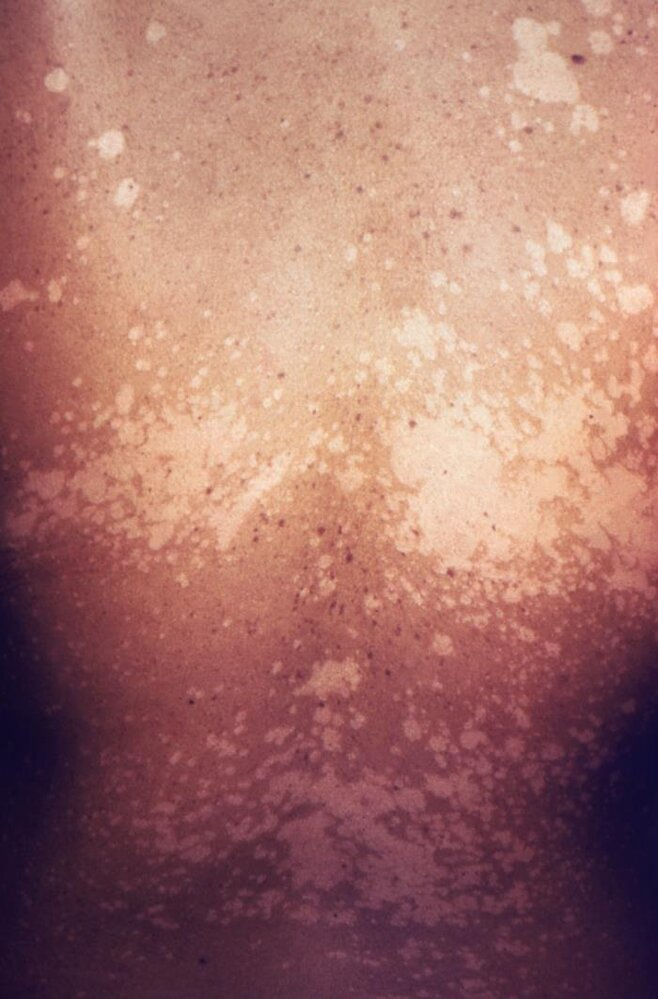Epidemiology
Etiology
- Pathogens
- Malassezia spp. (previously known as Pityrosporum): most commonly Malassezia globosa and Malassezia furfur
- Dimorphic, lipophilic yeast-like fungi that are part of normal skin flora
- Risk factors
- Warm and humid climates
- Excessive sweating, seborrhea, and oily skin
- Immunosuppression
- Cushing syndrome
Malassezia yeast is not one of dermatophytes
| Feature | Malassezia Yeast | Dermatophytes | |---------------------|-----------------------------------------|--------------------------------------------------------------------| | Classification | Genus of yeast | Group of fungi (genera: Trichophyton, Microsporum, Epidermophyton) | | Habitat | Normal skin flora | Soil, animals, human-to-human transmission | | Infections | Tinea versicolor, seborrheic dermatitis | Ringworm infections (e.g., Tinea pedis, Tinea corporis) | | Growth Requirements | Lipids (fats) | Keratinized tissues | | Pathogenicity | Opportunistic under certain conditions | Actively invade keratinized tissues |
Pathophysiology
- Malassezia spp. infect the stratum corneum → lipid degradation → production of acids that inhibit tyrosinase and damage melanocytes → hypopigmentation
- Inflammatory response to pathogens → hyperpigmentation
Clinical features
- Round, well-demarcated macules that reveal a fine, subtle scale with gentle scraping that can coalesce into patches (which may have irregular shapes)
- Colors vary (hypopigmented, hyperpigmented, or erythematous skin lesions)
- Lesions do not tan in the sunlight, because of which they are more commonly noticed in the summer.
- Milder pruritus (compared to dermatophyte infections)
- Common sites are the trunk and chest, but the neck, abdomen, upper arms, and thighs may also be affected.
